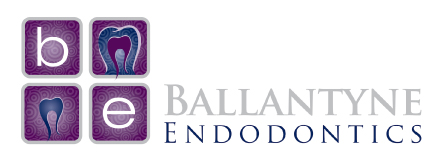What is a Ballantyne Endo Root Canal
Key Takeaways:
Advanced Technology:
Ballantyne Endodontics uses cutting-edge tools like Cone Beam Computed Tomography (CBCT), GentleWave, and lasers to provide precise, comfortable, and effective root canal treatments.
Minimally Invasive Treatments:
The use of advanced technology reduces the need for invasive procedures, often enabling quicker recovery times and less discomfort during and after the treatment.
Holistic Care:
The practice emphasizes patient-centered, holistic care, combining the latest techniques with a focus on preserving natural tooth structure and promoting long-term health.
If you’re new to our practice, you may wonder, “What is a Ballantyne root canal?” What makes our root canals special?
At Ballantyne Endodontics, we aim to relieve pain, save natural teeth, and provide a comfortable and positive experience for all our patients. Plus, we use state-of-the-art technology to provide unparalleled patient care and consistently great outcomes. It’s these features and more that set Ballantyne apart when it comes to endodontic care.
In this article, we’re outlining what it is that makes a Ballantyne Endo root canal different from the rest. As you will learn, we draw from extensive training, years of experience, and today’s best technology to provide each patient with high-quality holistic care. The result is treating each patient holistically.
Please remember that this article isn’t a substitute for personalized care from a dentist or endodontist.
Ballantyne’s Technology
Cone Beam Computed Tomography (CBCT)
At Ballantyne, we use the best dental technology to treat our patients with precision and make your experience as comfortable as possible.
One of the tools that contributes to what makes a Ballantyne Endo root canal different is Cone Beam Computed Tomography (CBCT). CBCT is an x-ray technology that provides a three-dimensional (3D) image of the teeth, soft tissues, nerve pathways, and bone in a single scan, helping us get a precise look at the tiny and barely visible root canal system. It’s called a “cone beam” because the x-ray beam is literally in the shape of a cone.
We use this imaging technology because it provides a more comprehensive view than traditional two-dimensional x-rays. It helps with accurate diagnosis and treatment planning in various fields of dentistry, such as orthodontics, implantology, endodontics, and oral surgery. When it comes to the tiny root canal structures inside your teeth, it makes all the difference in our diagnostic, treatment, and postoperative phases of patient care.
GentleWave
In addition to specialized imaging technology, we use other advanced tools to assist with treatment. This is where GentleWave comes in. The GentleWave System (GW) cleans and disinfects the complex network of canals within a tooth more thoroughly and effectively than traditional root canal treatments.
The system uses a combination of fluid dynamics and broad-spectrum acoustic energy to reach into the microscopic spaces where bacteria can hide inside your tooth. This advanced cleaning process helps to preserve more of the tooth structure and can often be completed in just one session.
The GentleWave procedure is minimally invasive, which can lead to a faster healing time compared to traditional root canal treatments. It’s one of the reasons that today’s root canal isn’t like those of the past, and it’s part of what makes a Ballanytine Endo root canal a more comfortable experience.
Precision Lasers
Lasers aren’t just for science fiction. Laser root canals, or laser-assisted root canal treatment, are a modern approach to traditional root canal therapy, and it’s another piece of technology we use at Ballantyne to provide a great root canal experience. In a laser-assisted root canal treatment, your endodontist uses a dental laser to clean and disinfect the root canal system precisely.
The laser’s energy is delivered in the form of light and gets absorbed by the tissues it comes into contact with. This energy can effectively kill bacteria and remove infected tissue within the root canal, often with less pain and swelling than traditional methods.
One of the key advantages of laser root canals is precision. The laser can target the infected areas without affecting the surrounding healthy tissue, resulting in a more comfortable experience for the patient and potentially faster healing times.
While endodontic lasers have their benefits, they may not be suitable for all cases. The decision to use laser technology will depend on the specific circumstances of the patient and the tooth in question. Always consult with a dental professional to understand the best treatment options for your situation.
Recently we have added the Fotona Laser as one of our newest endodontic technologies.
Our endodontists use it to get rid of bacteria that can grow inside your tooth’s canals, as well as any tiny bits of debris that may collect during your procedure.
In addition, the laser can be used to prevent soreness and fatigue by activating the muscles around your jaw. This can help make you more comfortable during your procedure.
Without even needing to touch you, the Fotona Laser helps ensure a safe, clean, and effective root canal, reducing postoperative discomfort and helping restore your oral health. It helps make a Ballantyne Endo root canal a positive experience for our patients.
Sealing for Well-Being
A final important piece of technology we use at Ballantyne Endo is bioceramic sealer, a type of dental material used in endodontics, particularly root canal treatment.
This material is crucial because once the root canal system is cleaned and disinfected, the tooth needs to be sealed to keep bacteria from getting back inside the treated tooth, which can result in more pain and infection.
So, our endodontists use bioceramic sealer to fill and seal the canals of the tooth after the infected pulp has been removed.
Bioceramic sealers are known for their excellent sealing ability, biocompatibility, and ability to promote healing. They’re made from materials like calcium silicate, which can stimulate complex tissue formation and are resistant to dissolution in the body.
One benefit of bioceramic sealers is the ability to bond both to the dentin (the hard tissue beneath the tooth’s enamel) and to the gutta-percha (the material used to fill the cleaned-out canals). This can result in a better seal with a lower risk of future infection.
Like any dental material, the use of bioceramic sealers should be based on the specific needs and circumstances of the patient and the tooth being treated.
Providing a Safe Experience
Ballantyne Endo provides a safe and professional practice for your comfort. One way in which we maintain this standard is by declining to use ozone in our practice. The use of ozone in dentistry is a subject of debate in the field. Some dentists and endodontists use ozone for its antimicrobial properties. It’s a powerful oxidant and can kill bacteria, viruses, and fungi.
However, we and many others choose to avoid it due to a lack of robust scientific evidence supporting its effectiveness and safety. In fact, the FDA has not approved ozone therapy in dentistry, and currently, there are no clear guidelines or standardized protocols for its use. This lack of regulation and standardization can lead to inconsistencies in treatment. Combined with our concern that it might harm healthy cells and tissues, we’ve chosen not to use it in our practice.
In addition to not using ozone, we run a “Latex Free Office.” Latex allergies are common, and repeated exposure can increase the risk of developing an allergy. Given that there are non-latex alternatives that offer similar levels of protection and functionality, we at Ballantyne opt to use non-latex gloves and other supplies to reduce the risk of allergic reactions and provide a safer environment for everyone.
Ballantyne Endo Is Committed to Excellence
Each endodontist at Ballantyne is committed to maintaining professional standards of excellence and keeping up with today’s best practices. While many qualified endodontists are not yet board-certified, board certification is a sign of excellence and dedication to the profession. Ballantyne’s founder, Dr. Sonia Chopra, D.D.S., is board-certified, as is Dr. Tanya Reiter. Each of our specialists has also won awards for their superior skills in endodontics: yet another component of what makes a Ballantyne Endo root canal one of a kind.
Contact us for more information on how a root canal at Ballantyne Endodontics can help save your teeth while restoring wellness.
Ballantyne Endodontics, in Charlotte, NC, is the professional home of endodontic specialists Dr. Sonia Chopra, D.D.S., Dr. Mark Tadrissi, D.D.S., and Dr. Tanya Reiter, D.D.S.

